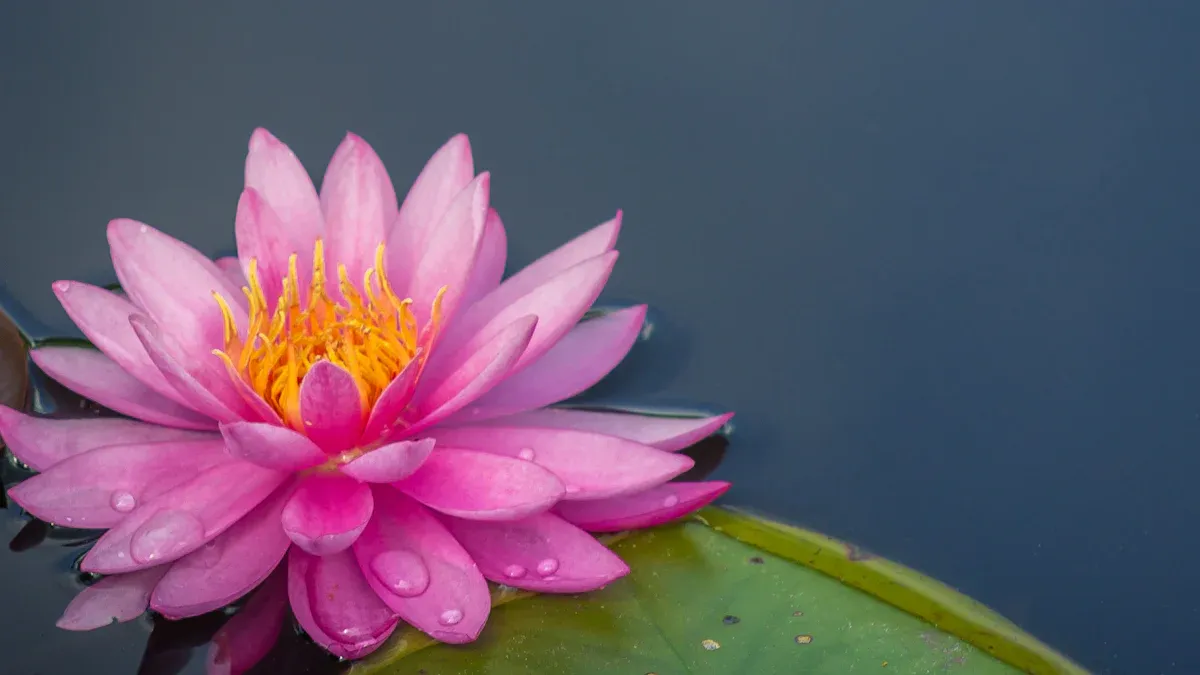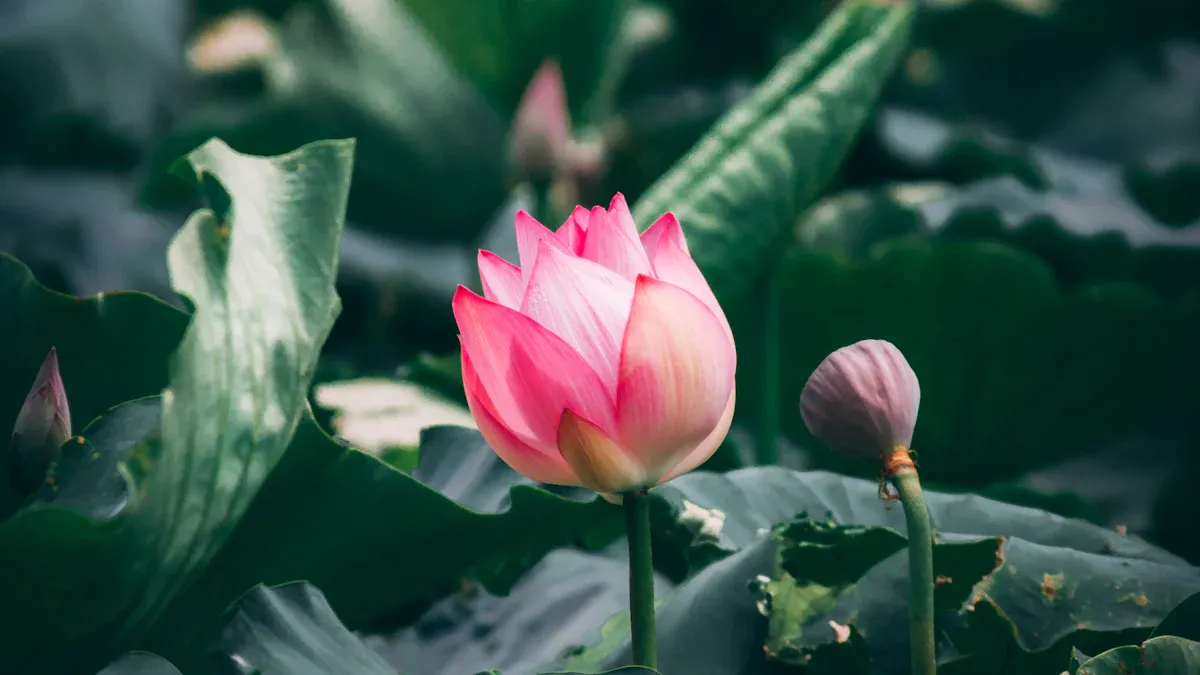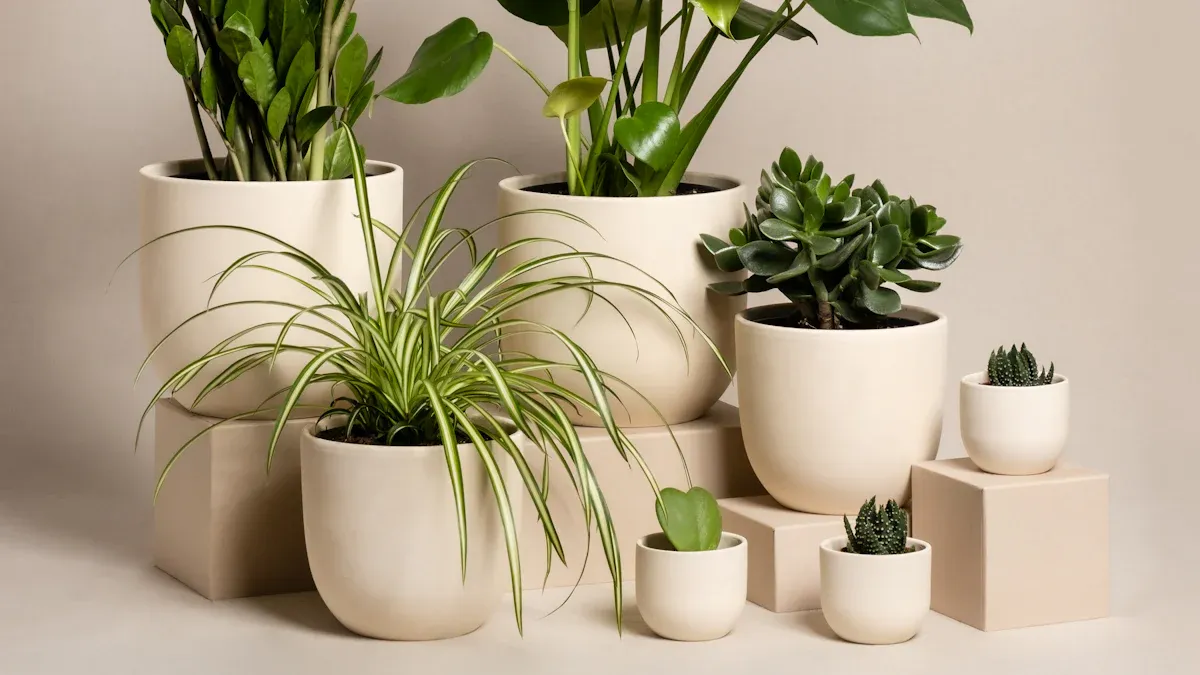
Lotus plants captivate with their stunning flowers and lush foliage, making them a perfect choice for container gardening. Growing lotus plants in pots offers you accessibility and enhances your outdoor space’s beauty. You might wonder how to successfully grow lotus plants in pots.
Did you know? Growing lotus plants not only beautifies your garden but also improves water quality and supports aquatic ecosystems!
Key Takeaways
Select the right lotus variety for your container. Consider dwarf varieties for small spaces and giant varieties for larger areas.
Use a deep container with proper drainage to support healthy root growth. Ensure your pot has at least 3-4 drainage holes.
Follow specific planting steps, including preparing the soil and positioning the tubers correctly, to promote successful growth.
Lotus Varieties

When it comes to growing lotus in containers, choosing the right variety is crucial. Some lotus plants thrive better in pots than others, so let’s explore some popular options and what you should consider when selecting your lotus.
Popular Varieties
Here are a couple of lotus varieties that horticultural experts recommend for container gardening:
N. nucifera ‘Perry’s Giant Sunburst’: This variety boasts creamy yellow flowers with large, 12-inch blooms. It’s perfect for containers and adds a stunning touch to your garden.
N. nucifera ‘Carolina Queen’: With its glowing pink blooms, this variety is also well-suited for container gardening. Its vibrant color can brighten up any space.
If you’re looking for smaller options, consider these varieties that fit well in small or medium-sized pots:
Lotus Variety | Height | Pot Size (Diameter x Depth) | Flower Type |
|---|---|---|---|
Dancing in Jade Tower Lotus | Up to 13″ | 10″ and wider, 4″-8″ deep | Single or Few Petals, < 20 petals |
Micro Lotus (Exquisite of Bowl) | Less than 13″ | 4″-12″ wide, 8″ or less deep | Various types, suitable for small pots |
Choosing Factors
When selecting a lotus variety for your container garden, keep these factors in mind:
Dwarf vs. Giant Varieties: Dwarf varieties are compact and perfect for small spaces. On the other hand, giant varieties make a dramatic statement but require more room.
Growth Height: Consider how tall the lotus will grow. Some varieties can reach impressive heights, while others stay under 12 inches. Knowing this helps you choose the right pot size.
Climate Compatibility: Think about your local climate. Hardy varieties can go dormant in winter, while tropical varieties thrive in humid conditions. Make sure to pick one that suits your environment.
Growth Conditions: Lotuses can fill space quickly, so understanding their ultimate height is crucial. This ensures you provide enough room for them to flourish.
By considering these factors, you can select the perfect lotus variety for your potted garden. Growing lotus in containers not only enhances your space but also brings a sense of tranquility and beauty.
Container Gardening Essentials

When you decide to grow lotus plants in pots, choosing the right container is key. The ideal container should be deep enough to accommodate the lotus tubers and allow for healthy root growth. Here are some recommendations for container types and sizes:
For smaller lotus varieties, inexpensive glazed pots work well.
For larger varieties, consider using black plastic 15-gallon livestock feed and water tubs. They provide the necessary depth and are budget-friendly.
Ideal Containers
The material of your container also plays a significant role in the health of your lotus plants. Here’s a quick look at some materials you might consider:
Material | Benefits |
|---|---|
Fiberglass | Durable and resistant to water and temperature changes |
Concrete | Strong and withstands outdoor conditions |
Ceramic | Aesthetic appeal and retains moisture well |
High-quality plastic | Lightweight, cost-effective, and resistant to environmental factors |
Using the right container helps ensure your lotus thrives.
Drainage Importance
Proper drainage is essential for healthy growth. Without it, your lotus plants can suffer from waterlogging, leading to root rot. Here are some tips for effective drainage:
Ensure your pot has a minimum of 3-4 drainage holes.
Consider adding a layer of gravel or an aquatic soil mix at the bottom of your pot. This helps maintain optimal moisture levels and promotes healthy root development.
By focusing on these container gardening essentials, you set the stage for a thriving lotus garden. Remember, the right container and proper water management are crucial for your lotus plants to flourish.
Planting and Care Techniques
Planting Steps
Planting lotus tubers is an exciting process that sets the stage for beautiful blooms. Follow these simple steps to ensure successful planting:
Prepare the Soil: Fill your container about three-quarters full with heavy topsoil or clay-based potting media. Mix in water until it reaches a muddy consistency. Avoid using potting mixes with peat or perlite, as they can float out of the pot.
Position the Tubers: Place the lotus tuber in the mud against the side of the container, ensuring the shoots are pointing upwards. This positioning helps the plant grow more effectively.
Cover the Rhizome: Lightly cover the rhizome with mud, leaving the shoots exposed. This allows the plant to emerge easily.
Add Water: Pour at least an inch of water above the mud. This initial water level helps keep the tuber moist and encourages growth.
Find the Right Spot: Move the container to a shallow part of a pond or a sunny area, ensuring at least a foot of water covers the pot. Lotus plants thrive in full sun, so aim for a location that receives at least 6 hours of sunlight daily.
Care Tips
Once you’ve planted your lotus, maintaining its health is crucial for vibrant blooms. Here are some essential care tips:
Water Management: Change the water daily during germination to promote optimal growth. Lotus plants prefer warm water temperatures between 75°F and 87°F.
Fertilization: Wait for floating or aerial leaves before fertilizing. Use a soluble fertilizer like 20-10-20 every 20 days after sprouting, starting with 1/2 tsp per 5 gallons of water. Increase to 1 tsp per 5 gallons for subsequent doses. In late July, reduce to 1/2 tsp and stop fertilizing in early August to prepare for winter dormancy.
Pest Control: Regularly monitor your plants for pests like mealybugs and aphids. Maintain healthy plants through proper care and nutrition. Clean leaves to remove sticky residues that attract pests, and dispose of fallen leaves to minimize hiding spots.
Sunlight Exposure: Ensure your lotus receives full to half-day sun for optimal flowering. Excessive sunlight can cause leaf scorch, so consider placing your container in a spot with bright, filtered light.
Repotting: Every 2 to 3 years, repot your lotus to maintain optimal health. This practice helps prevent overcrowding and ensures your plant has enough nutrients.
By following these planting and care techniques, you can enjoy the beauty of growing lotus flowers in your container garden. With the right attention and care, your lotus plants will thrive and bring joy to your outdoor space.
Growing lotus in a pot can be a rewarding experience. Remember these key points:
Choose the right container, like inexpensive glazed pots or black plastic tubs.
Use proper planting techniques to ensure healthy growth.
Maintain consistent water levels and provide plenty of sunlight.
Take the plunge and start your own lotus container garden! You’ll find joy in nurturing these beautiful plants and watching them bloom.
FAQ
What type of water should I use for my lotus plants?
Use clean, fresh water. Avoid chlorinated water, as it can harm your lotus.
How often should I change the water in my lotus pot?
Change the water daily during germination. This keeps the lotus healthy and promotes growth.
Can I grow lotus indoors?
Yes, you can grow lotus indoors if you provide enough sunlight and a suitable container with water.

